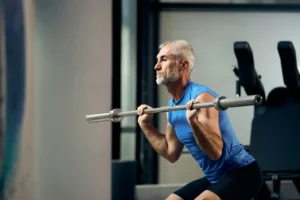Shoulder hemiarthroplasty is a procedure that replaces half of the shoulder joint.
Your shoulder joint is made up of two parts:
A ball at the end of the humerus bone in your upper arm is called the humeral head.
A socket in your shoulder blade called the glenoid.
The humeral head rotates within the glenoid to make the shoulder joint.
In shoulder hemiarthroplasty, the humeral head is replaced, and the glenoid is left intact. The surgeon will then repair the rotator cuff tissue to complete the surgery.
In a total shoulder replacement, both the humeral head and the socket, or glenoid, of the shoulder is replaced.
There is a risk that the glenoid component will loosen over time for people who are young or very active.
The glenoid component is made of polyethylene and is cemented into place. Over time, this can loosen as a result of the forces placed on this component during shoulder motion. Based on your lifestyle, we may determine that a partial shoulder replacement would be better for you. Weightlifters, triathletes, or others with demanding hobbies or occupations may wear out the polyethylene glenoid socket more quickly.
Another scenario where hemiarthroplasty may be used is in a condition called vascular necrosis, or AVN. This is a clinical condition that develops when the blood supply to the humeral head is compromised, causing deterioration. The surgeon only needs to replace the ball in this situation since the socket of the joint is still well preserved.
There is a possibility that further surgery could be needed. Because no implant is on the socket, it’s possible that the metal head of the humeral component could erode the socket later in life, requiring either total or reverse shoulder arthroplasty.
The average procedure takes 45 minutes to an hour, which is similar to the time required by other shoulder replacements.
The majority of healing occurs within the first three months. Patients will wear a sling for a brief period and then progress into physical therapy to regain range of motion and strength.
It may take patients up to 6 months until they fully resume all their usual hobbies and activities.





